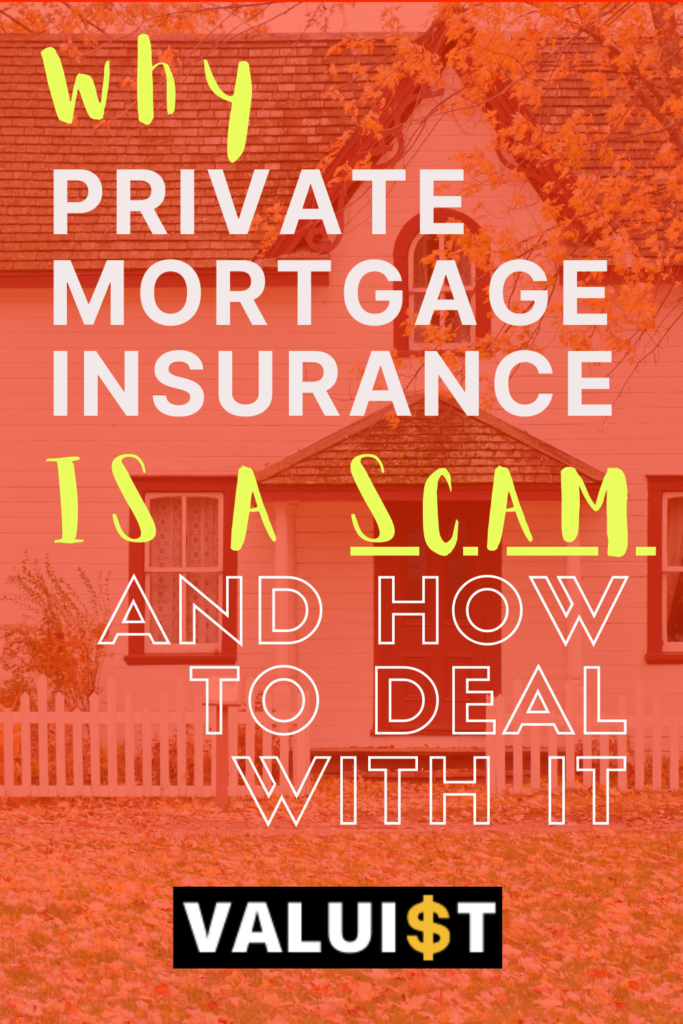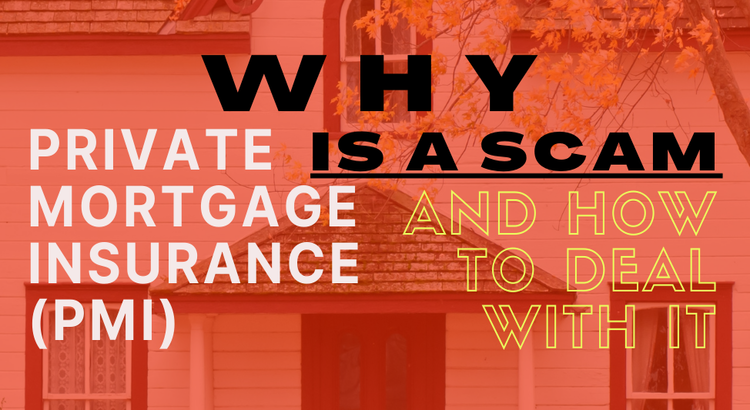When you drive a car, buy a house, or require medical care, you need insurance to cover uncontrollable expenses that might otherwise bankrupt you. Insurance is a crucial and often mandatory tool when it’s used to protect you from worst-case financial scenarios. But if car insurance protects your car, home insurance covers your house and health insurance is for your medical expenses, what does private mortgage insurance (PMI) insure you against? Nothing, actually.
Private mortgage insurance is required when you are buying a home and putting less than 20% down. PMI protects the lender in case you default on your loan. When you default and the value of your property doesn’t cover the cost of foreclosure, PMI covers the remaining expense for the lender. Afterwards, the private mortgage insurance company pursues you, potentially into bankruptcy, for the money you still owe. So why doesn’t your lender pay for PMI then? If lenders want insurance, they should either pay for it like everyone else, or tighten their underwriting policies. It’s especially egregious if you have excellent credit and you want to buy your first house. You have some options though, let’s take a look at:
How to best control, or avoid paying private mortgage insurance
1. Pay 20% down on the purchase of a property to avoid PMI
The easiest (but most difficult for first-time homebuyers) way to eliminate private mortgage insurance, is to put 20% down when you buy a property. If you recently sold your house, reaching that 20% threshold is a lot easier and at a 80/20 debt to equity ratio, you can avoid PMI altogether. Another benefit to putting 20% down is that it makes your purchase offer stronger, especially in a competitive market. That’s because the seller’s agent knows that buyers can only getting lending up to the appraised value of a home, not necessarily the offer amount. If the appraisal comes in low, sellers like to know that the buyer has more cash to bring to the table to close the deal. Otherwise the seller must either lower the price, challenge the appraisal or kill the deal and relist the property.
2. Make a higher down payment and work on your LTV Ratio
If you can’t afford to put down 20% on the property but you’re able to do 10% – 15% (rather than the minimum 3% – 5%) you can significantly reduce the amount of time that you have to carry private mortgage insurance. That’s because once you hit that 20% debt-to-equity ratio, either through principal payments or the value of your home increasing, you can get an appraisal and send a formal letter to your lender requesting to discontinue PMI.
Of course, there are downsides to increasing your down payment, especially if getting to 10% – 15% is a stretch. Immediately putting a lot of cash into a house reduces the money you can allocate to repairs, upgrades, furnishing, investments, or for unforeseen expenses. It also puts a lot more your money at risk if the houses value declines. If your principal loan balance is higher than the value of your house, you are forced to either stay put, or sell at a loss.
Related: How to Prioritize Your Savings Infographic
3. Pay private mortgage insurance up-front
Another way to handle private mortgage insurance is to get it out of the way during closing. This is done through a “Single Premium” mortgage. Especially when you are making a significant down payment, the payoff amount on the remaining PMI will be relatively low and paying it up-front can free up cashflow of $150-$200+ per month. The downsides of this plan are the same as the downsides for overextending yourself on the down payment, you will need funds to cover the true cost of home ownership.
4. Split your loans to avoid paying private mortgage insurance
Splitting your loans entails a lot of juggling, but if done right, a piggyback loan can help you actually avoid mortgage insurance altogether. In short, you can take a loan out for 80% of a home’s value, to avoid the private mortgage insurance, and subsequently take a second loan for the remainder, the home price minus the down payment and first mortgage. Note, that the second mortgage will definitely have a higher interest rate but often the combined costs of both loans will still be less than the cost of PMI.
5. Creative solutions to avoid PMI (or even a mortgage)
There are some alternative housing arrangements that allow you to avoid PMI, or even a mortgage altogether. By purchasing a property with 100% cash, you will never have a housing payment, except for property taxes of course. It may sound impossible, especially if you’re living in an expensive city with rising housing costs but many people save up until they are able to buy a small property outright.
If you can buy your first property in cash, and increase it’s value before you sell, you may be able to flip your way into a mortgage free life. This type of living isn’t for everyone. The first properties that many people can afford with 100% cash are either on wheels, a “mini house” or land without infrastructure. However, if you don’t mind roughing it for a bit, you can save an extraordinary amount of money if you can avoid housing expenses.


